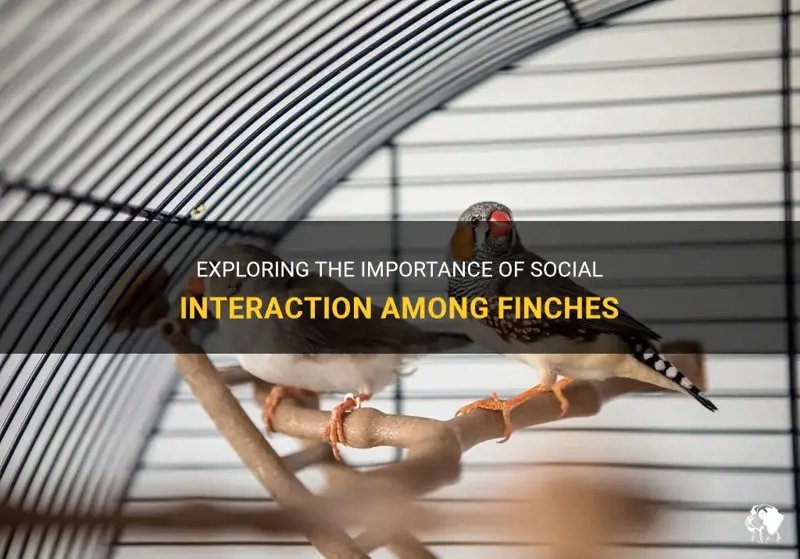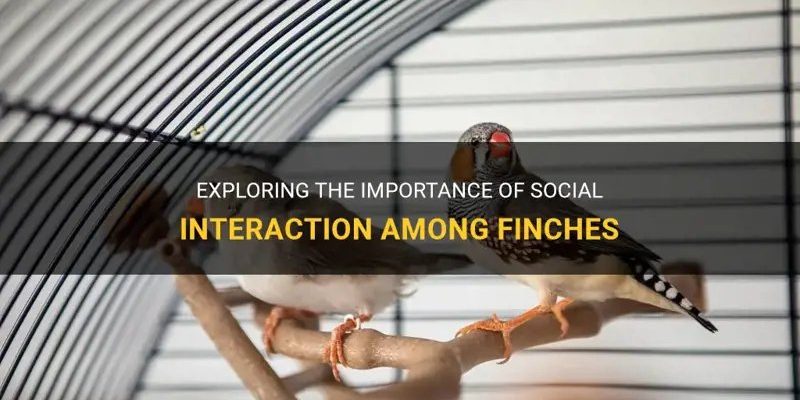
Imagine you’re at a party where everyone is mingling, laughing, and sharing stories. Now, picture yourself alone in a corner, sipping on a drink. It’s a little lonely, right? For finches, the dynamics of social behavior play a crucial role in their happiness and overall well-being. So, let’s dig deeper into this topic and figure out if finches really need companions and what their social behavior looks like.
Understanding the Social Nature of Finches
Finches are naturally social creatures. In the wild, they often form flocks that provide both companionship and safety from predators. Being in a group helps them share resources, like food and nesting spots, while also allowing them to engage in social interactions that stimulate their instincts. Think of it as their own little community, where they can chirp away, establish pecking orders, and even court each other during mating seasons.
In captivity, this social behavior doesn’t just disappear. When you bring a finch into your home, you might notice them becoming lonely or even stressed if they’re alone. Without the companionship of fellow finches, they can develop behavioral issues, like excessive singing, pulling out their feathers, or even becoming withdrawn. It’s essential to understand that a finch’s mental health greatly benefits from having at least one companion.
Why Companionship Matters
You might be wondering why companionship is so essential for finches. Here are a few reasons:
- Social Interaction: Finches communicate with one another through songs and calls. Companionship allows them to engage in conversations, which is vital for their mental stimulation.
- Safety in Numbers: In nature, being in a flock provides protection. Even domesticated finches feel safer when they have friends around.
- Breeding and Mating: If you hope to have baby finches, providing a companion is essential for breeding. Male and female finches need to interact for successful mating.
Ideal Companions for Finches
If you’ve decided to get a companion for your finch, you might be curious about what makes an ideal match. While finches are generally friendly, some species are better suited to live together than others. For example, zebra finches and society finches are particularly social and often do well together.
Mixing different species can sometimes lead to conflict, so it’s best to stick to similar kinds. For instance, pairing two male finches can sometimes lead to squabbles, while a male and female will generally get along well. Here’s a quick rundown of some good pairings:
- Zebra Finches: Known for their friendly nature.
- Society Finches: Very sociable and adaptable.
- Gouldian Finches: Colorful and generally peaceful.
By choosing the right companions, you can create a harmonious environment that encourages happy dancing, singing, and even bonding rituals.
Setting Up a Social Environment
Creating the right environment for your finches is crucial for promoting social behavior. A spacious cage is the first step. Think of it as their little apartment. They need enough room to move around, play, and interact without feeling cramped. Aim for a cage that’s at least 30 inches wide, with plenty of perches, toys, and hiding spots.
Adding multiple feeding stations and water sources can also help reduce competition and stress. Finches can be a bit territorial, and having separate areas for eating and drinking encourages smoother interactions. Additionally, consider regular out-of-cage time so they can stretch their wings and explore together. This kind of playtime helps strengthen their bond.
Signs of a Happy Finches’ Community
So how do you know if your finches are thriving together? Here are a few indicators:
- Chirping and Singing: Happy finches will sing and chirp more often, reacting to each other’s calls.
- Mutual Grooming: Look for signs of affection, like one finch preening another.
- Playing Together: Finches that play with toys, chase each other, or spend time together on perches are usually content.
If you see these behaviors, you can feel pretty confident that you’ve created a comfy, social space for your feathery friends.
What If I Can Only Have One Finch?
If you find yourself in a situation where you can only keep one finch, it’s essential to engage with them frequently. Think of it like being their human companion. You can provide plenty of interaction, playtime, and mental stimulation through toys and activities.
Try talking to your finch and even whistling tunes—yes, finches can learn to mimic sounds! You can also include mirrors in their cage. While this isn’t a substitute for a real friend, it can give them something to interact with. However, remember that while a single finch can live alone, they will thrive much better with a companion.
Concluding Thoughts on Finch Companionship
Ultimately, finches are social little creatures that thrive in the company of their own kind. If you’re thinking about bringing one into your home, consider getting a companion too—it can make all the difference in their happiness and well-being. From their playful songs to their affectionate interactions, a pair of finches can bring a vibrant atmosphere into your space.
Whether you decide to house multiple finches or give an individual bird the best human companionship, understanding their social needs is crucial. After all, like us, finches flourish in a community, and you wouldn’t want your little friend to feel all alone in this big world!

